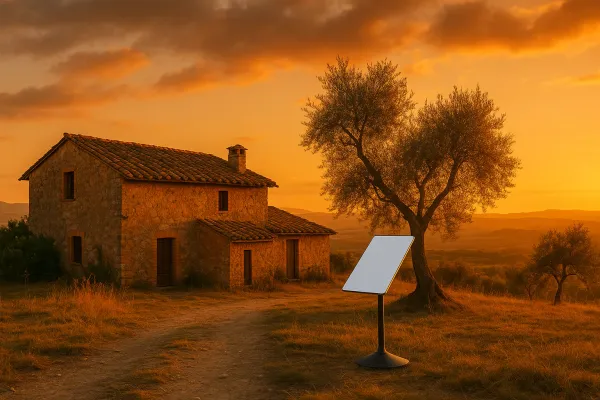Rustic Retreat
Hot Projects
Live broadcasts and documentation from a remote tech outpost in rustic Portugal. Sharing off-grid life, the necessary research & development and the pursuit of life, without centralized infrastructure.
 Subscribe to our new main project Rustic Retreat on the projects own website.
Subscribe to our new main project Rustic Retreat on the projects own website.

Apollo-NG is a mobile, self-sustainable, independent and highly-experimental Hackbase, focused on research, development and usage of next-generation open technology while visiting places without a resident, local Hackerspace and offering other Hackers the opportunity to work together on exciting projects and to share fun, food, tools & resources, knowledge, experience and inspiration.
Software Defined Radio (SDR) has finally reached a much broader mass of people, who wanted to play with RF technology, but didn't find the time or resources to learn all necessary skills, to build a hardware based radio. Thanks to the work of the GNU-Radio and OsmoCom developer crowd, this barrier is finally gone and everyone can, more or less, directly access, what the antenna receives.
The last Mission-Log about a GNU-Radio based NFM SDR receiver pulled in a lot of people, looking for examples, to better understand GRC and to improve their own SDR projects. The real beauty about it is this: Unlike hardware receivers, which can't simply be replicated and shared, we only have to come up with good software receivers/transceivers once and then may just share them amongst each other, without any limitation.
However, the antenna itself, is still hardware and will most likely never be replaceable by software. On ##rtlsdr people often ask about antennas, because they are clearly not satisfied (and who could blame them) with the performance of the original L/4 DVB-T stub. Unfortunately, there just is no can-do-it-all-perfectly antenna, even if some despicable corporations try to market their products as such.
Other people often recommend Discone-Antennas for wideband reception, but there also are other, less known alternatives, which still are a very good compromise as a general purpose wideband receiver antenna. Not everyone has the space or possibility to put up a Discone-Antenna, so why not use an antenna, that performs even better than a Discone (at least it did here in direct comparison), is a lot smaller and looks way less “conspicuous”:
One of them was the Dressler ARA-2000, covering 50-2000MHz, designed and built in the 90's. The company died the usual death by capitalism (bought by another company and then stripped down and moved production to China). Today there are only a few of these left in the wild and are traded for unrealistic prices on $bay. This particular one was used for the Argus-Prototype but sacrificed and disassembled with the hope, that replicating the antenna will be easy, so that this knowledge would get openly reseeded into the wild, instead of being lost in some archives of a dead corporation. It would be great, if the following documentation about the ARA-2000 would inspire more people, to build their own Active Wideband Receiving Antenna (AWRA) and try to improve and evolve the concept even further or come up with completely new ideas.
Next generation robots, drones and motorized scooter/skateboard/e-bike projects need efficient and resilient BLDC controllers, so if you're also looking for a solid open-source brushless motor speed controller (BLDC ESC) for your project or knowledge/inspiration to bootstrap your own, then you most definitely want to have a look at VESC.
It's a full open-source breed where hardware, firmware and support-software are available on github and no Windows or other crappy, proprietary systems are required for development or tuning/configuration.
It seems like it's time to pre-warm our oscillators and prepare our SDRs for more DARC action in the near future. For more than the last 4 month, the traffic to darc-side-of-munich-hunting-fm-broadcasts-for-bus-and-tram-display-information-on-90-mhz revealed an interesting pattern: There was a steady increase of traffic coming first from the big European & Asian automobile manufacturers, then from automotive subcontractors globally and now from Asian electronics manufacturers.
These metrics, their sudden occurrence, the event order and the isolation to mostly automotive context simply suggest that there must be something in the works which will get deployed soon (maybe even already is), to broadcast data to cars via DARC. It will get interesting…